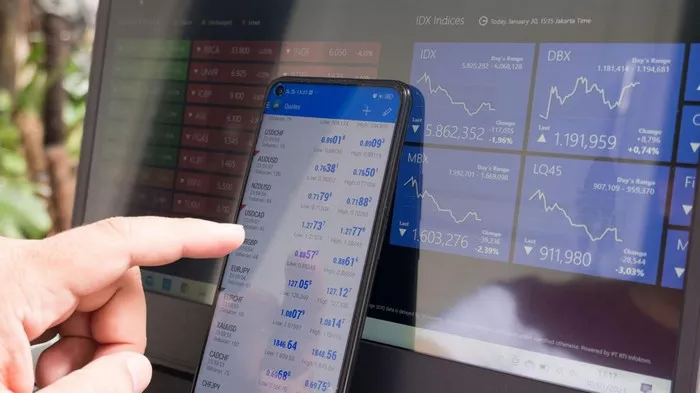Futures markets are dynamic and complex ecosystems influenced by a myriad of factors that drive price movements. Understanding what causes futures to go up is essential for traders, investors, and market participants seeking to capitalize on price trends and make informed decisions. In this article, we delve into the various factors that can lead to increases in futures prices, shedding light on the mechanisms driving upward movement in these markets.
Supply and Demand Dynamics
At its core, the price of futures contracts is determined by the interaction of supply and demand forces in the market. When demand for a particular futures contract exceeds supply, prices tend to rise as buyers bid up the price to secure contracts. Conversely, when supply outweighs demand, prices may fall as sellers compete to offload contracts.
Several factors can influence supply and demand dynamics in futures markets, including changes in market sentiment, economic indicators, geopolitical events, and weather patterns. Positive news or developments that increase confidence in the underlying asset or indicate future scarcity can lead to increased demand for futures contracts, driving prices higher.
Market Sentiment and Investor Psychology
Market sentiment and investor psychology play a significant role in driving futures prices higher. Optimistic or bullish sentiment can fuel buying interest and drive prices higher as investors anticipate future price appreciation. Conversely, pessimistic or bearish sentiment can lead to selling pressure and downward price movements as investors seek to exit positions or hedge against potential losses.
Factors such as news headlines, earnings reports, central bank announcements, and geopolitical tensions can influence investor sentiment and shape market perceptions of future price movements. Positive developments, such as strong corporate earnings, robust economic growth, or favorable regulatory changes, can boost investor confidence and drive futures prices higher.
Interest Rates and Monetary Policy
Changes in interest rates and monetary policy decisions by central banks can have a significant impact on futures prices, particularly in financial markets. Lower interest rates can stimulate borrowing and spending, leading to increased demand for assets such as stocks, bonds, and commodities, which can drive futures prices higher.
Conversely, higher interest rates can dampen economic activity and reduce demand for assets, leading to lower futures prices. Central bank announcements, such as interest rate decisions, forward guidance, and quantitative easing measures, can influence market expectations and drive price movements in futures markets.
Inflation Expectations
Inflation expectations can also influence futures prices, particularly in commodity markets where prices are sensitive to changes in supply and demand dynamics. Expectations of rising inflation can lead investors to seek out inflation-hedging assets such as commodities, driving up futures prices for commodities such as gold, oil, and agricultural products.
Factors such as changes in monetary policy, fiscal stimulus measures, supply chain disruptions, and geopolitical tensions can impact inflation expectations and drive futures prices higher. Investors may use futures contracts to hedge against inflation risk or speculate on future price movements driven by inflationary pressures.
Global Economic Conditions
Global economic conditions can have a significant impact on futures prices, particularly in interconnected markets such as equities, currencies, and commodities. Economic indicators such as GDP growth, unemployment rates, consumer spending, and manufacturing activity can influence market expectations and drive price movements in futures markets.
Positive economic data indicating strong growth prospects or improving fundamentals can lead to increased demand for futures contracts, driving prices higher. Conversely, negative economic developments such as recessions, geopolitical tensions, or trade disputes can dampen investor sentiment and lead to downward price movements in futures markets.
Commodity-Specific Factors
In commodity futures markets, factors such as supply disruptions, weather events, geopolitical tensions, and changes in global demand can have a significant impact on prices. Supply shortages or disruptions can lead to increased demand for futures contracts as market participants seek to secure supply at current prices, driving prices higher.
Conversely, oversupply or excess inventories can lead to downward pressure on prices as producers and traders seek to offload surplus inventory through futures markets. Weather events such as droughts, hurricanes, or floods can impact crop yields and production, leading to volatility in agricultural futures prices.
Technological Advancements and Market Access
Technological advancements and improvements in market access have also contributed to increased participation and liquidity in futures markets, which can drive prices higher. Electronic trading platforms, algorithmic trading strategies, and high-frequency trading have enabled faster execution and greater market efficiency, leading to tighter bid-ask spreads and increased liquidity.
Greater access to futures markets through online trading platforms, mobile apps, and brokerage accounts has democratized market participation and allowed retail investors and traders to access futures markets directly. Increased participation from retail investors can lead to greater liquidity and price discovery in futures markets, driving prices higher.
Conclusion
In conclusion, there are various factors that can cause futures prices to go up, including changes in supply and demand dynamics, market sentiment and investor psychology, interest rates and monetary policy, inflation expectations, global economic conditions, commodity-specific factors, and technological advancements.
By understanding the drivers of upward movement in futures markets, traders, investors, and market participants can make more informed decisions and capitalize on price trends effectively. However, it is essential to recognize that futures markets are complex and dynamic, and prices can be influenced by a multitude of factors, requiring careful analysis and risk management strategies.


